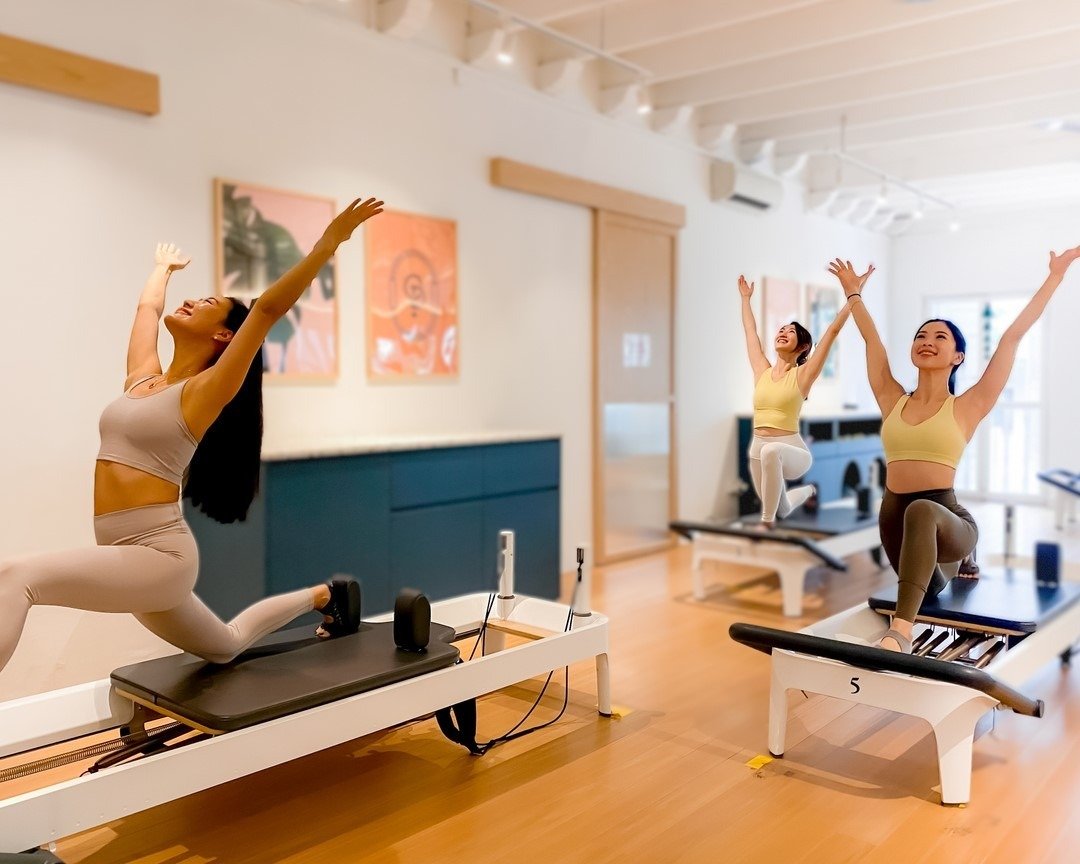Powerlifting and strength training for women — why we can and should do it
Look more athletic, feel more confident and protect your bones while you’re at it. We speak to women who lift weights at the gym
Text: Min Tan
Regardless of where you are on your fitness journey — whether you’re a work out newbie or have been at the exercise game for a few years — there’s one sentiment women are led to believe: that lifting heavy weights makes you bulky. While the public mindset around strength training for females in general has generally shifted for the positive in the last decade, it’s still centered around using light weights and doing as many repetitions of a movement as possible.
The myriad reasons behind this deeply entrenched misconception calls for another story for another day, but consider this — when a quick search of ‘dumbbells’ on Lazada yields a whole array of small, brightly-coloured (mostly pink and red) dumbbell choices (up to only 6kg!) patronisingly labelled ‘ladies dumbbells’, is it any wonder that many of us continue to subconsciously believe in the glass ceiling of the strength capabilities?
Daphne Maia Loo, powerlifting athlete and coach at Strength Avenue, a boutique gym that focuses on strength training and conditioning, powerlifting and kettlebell training for everyone from MMA fighters to your weekend fitness warriors, is more than familiar with managing these mindsets.
“While there are many well-researched articles out there, to the general public, what sticks in their minds are images of female bodybuilders on social media,” she says. This means that even when there is interest in lifting weights, some of the women that she meets often tell her that they “want to get stronger or ‘tone up’, but not look like that.”
“Many women believe that lifting weights will make them look like bodybuilders within a short period of time. The reality is that bodybuilding is a sport that requires a lot of effort, discipline and time — things that most people simply do not have.”
Ultimately, the positives to lifting far outweigh any negatives. “Not one single woman I know who has been lifting weights regularly can say that it has little to no benefit to them,” Daphne says. Read on for why ...
You’ll look more athletic, but that’s not all
“Besides improving fat and weight loss, lifting weights also helps to increase bone density and delay or prevent osteoporosis and osteoarthritis (caused by the decrease of estrogen in the body when we reach menopause). Of course, getting stronger never hurt anyone, and it’s incredibly functional for life, regardless of gender.”
Physical strength and mental strength
“For beginners, seek a coach who can teach you the fundamentals, to build a good and strong base as you begin your journey in weights training. Don't be in a rush to load up the bar as you learn, but also don't be afraid to start lifting more weights. Getting stronger is definitely going to be addictive, not to mention physically and mentally empowering.”
Weights are the ideal complement to cardio
“Whatever your fitness goals or whatever sport you play, strength training and lifting weights at the gym will help you improve. You don't have to give up other fitness activities. I would recommend at least 1-2 strength training sessions a week, alongside some cardio-focused workouts or cardio-training, in addition to your other interests such as LISS, hiking, boxing, long-distance running or cycling, etc.
Lifting heavy: How it helped Daphne’s clients
Four weight-loving women reveal how lifting has made them faster, stronger, happier.
Dini, a communications professional in her thirties, started lifting weights about 10 months ago. She frequently experienced back pains and hamstring issues from her long-distance runs, especially since she has hyper extension in her lower back, two herniated discs, and a history of sciatica. Since she started lifting weights regularly, she’s been able to run faster, stronger, and more importantly, pain-free.
Lydia, a credit analyst in her forties, started lifting weights two years ago after recovering from major surgery. Since then, she has lost about 12 kilograms, dropped two dress sizes, improved her overall health (cholesterol, blood pressure, blood sugar levels), and no longer experiences frequent knee or joint pains. She has also become more active overall, and can now last longer at tennis which she plays frequently with friends.
Kate (not her real name), a young secondary school student who is a national youth synchronised swimming competitive athlete, started lifting weights almost three years ago at age 11. She has since been steadily improving her sport performance, achieving better mobility, better control in the water, as well as vertical lines above the water. Her parents have given frequent feedback that the strength training and conditioning program she is on has helped her in her synchro training.
Amanda, a professional MMA fighter and boxing coach, has seen great improvement in her fights and body composition since she started lifting weights. Her strength improvements show during her training in different martial arts such as boxing, jiu-jitsu and wrestling, as well as during her competitions, where she has been able to demonstrate good control and dominance in many positions.”
Before you start lifting weights always speak to your personal trainer or a professional who’ll be able to guide you. You can contact Daphne directly here.












